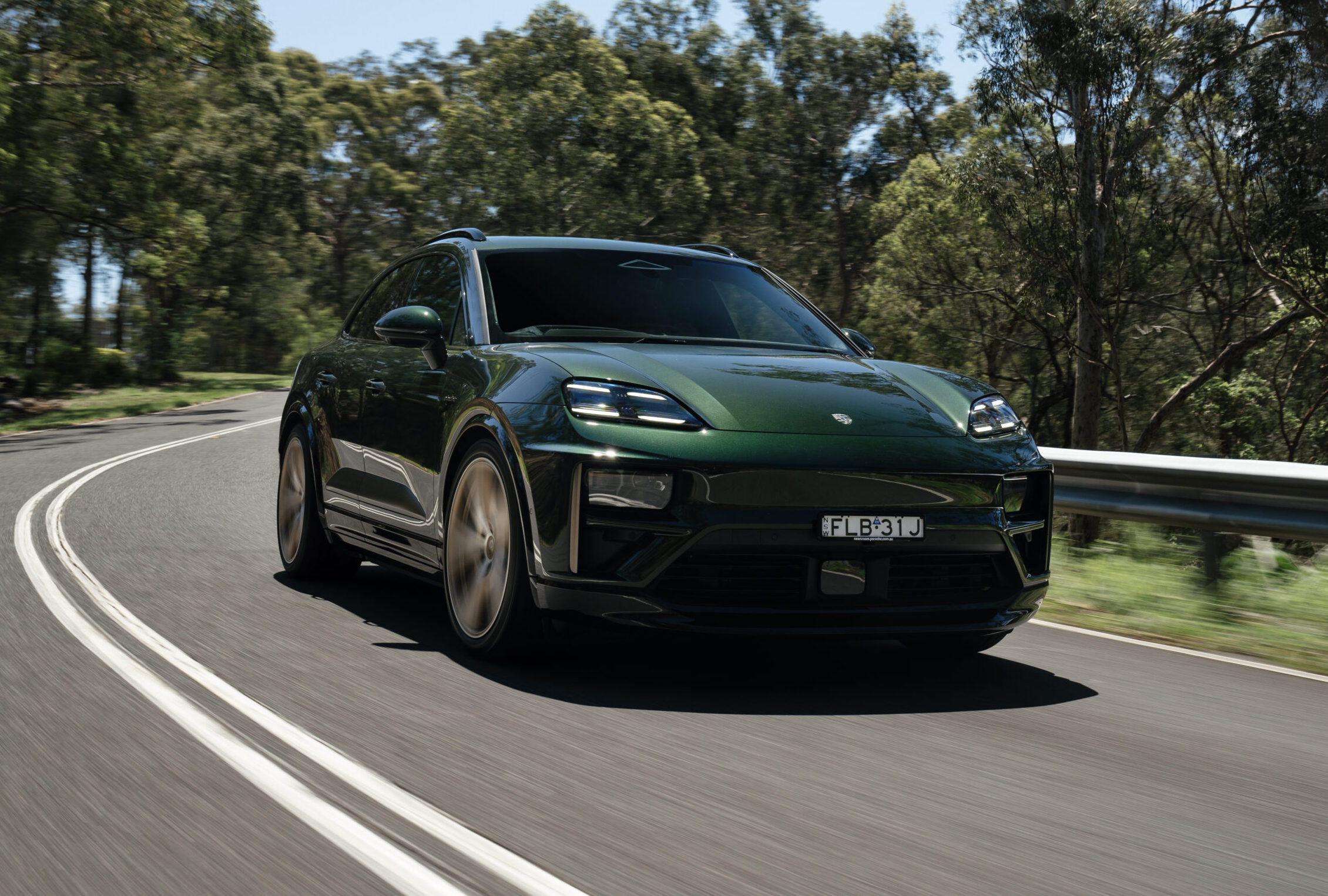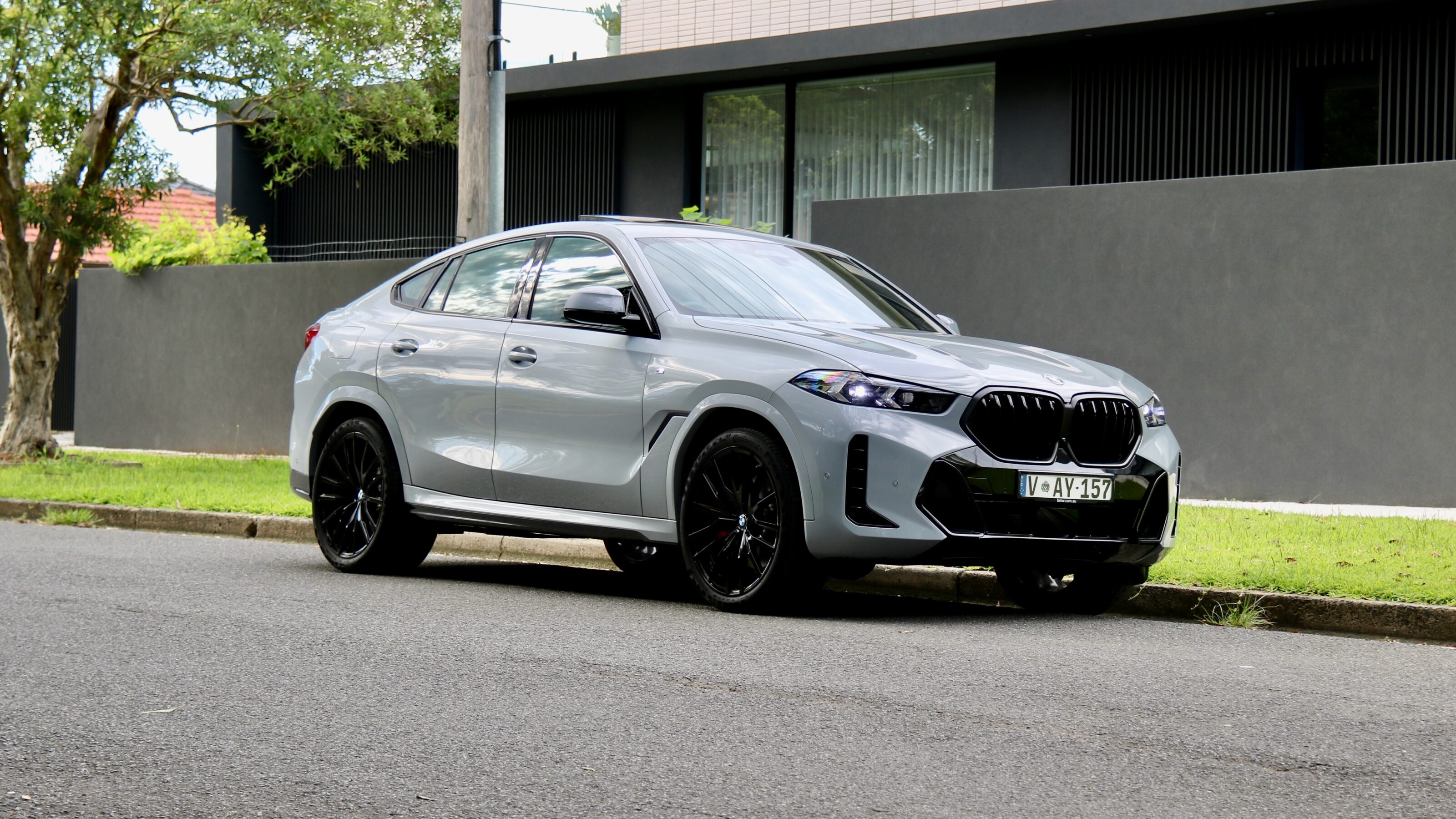Ever since one-time tractor manufacturer David Brown (DB) bought Aston Martin for £20,500 in 1947, the British sports car builder’s claim to fame has been exclusive fast cars with power, panache, and prestige.
In stark contrast, cabin space has been a scarce commodity in cars from Newport-Pagnell, so to be flat out in Aston’s new 320km/h DB11 two-plus-two at an Italian test track and have decent elbow and head room is an unexpected pleasure. But not as pleasurable as Aston’s first twin-turbo V12.
Inside the DB11 there is room enough up front for wide-hipped millionaires and their coiffured companions to travel first class, but although the second row is no longer a leather-clad bench for contortionists, it still helps to be born small to sit there. The cabin’s extended inner dimensions are not only due to a 65mm wheelbase stretch but also to the redesigned, extruded, bonded-aluminium body structure that replaces the ageing VH matrix introduced with the Vanquish MkI in 2001.
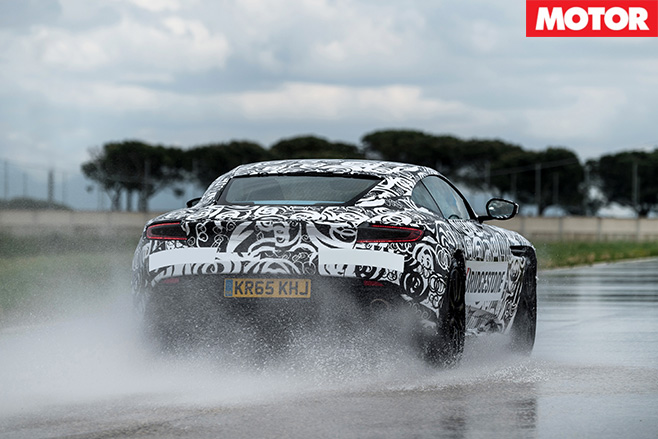
Instead, the dash is now dominated by a colour LCD readout which changes graphics in sync with driving modes labelled GT, Sport and Sport Plus. It’s a modern layout, but the digits are quite small and the whole assembly is still no match for a good head-up display. Above the centre air vents, an LCD monitor fed with software provided by tech partner, Mercedes-Benz.
Although our early muletto has been shrink-wrapped in monochromatic camouflage film, the interior is quite close to the production version, with baby-blue leather combining contrasting wave-stitching with an antique brogue surface pattern, and matte open-pore ash wood trim. It’s a classy, if psychedelic, driver environment.
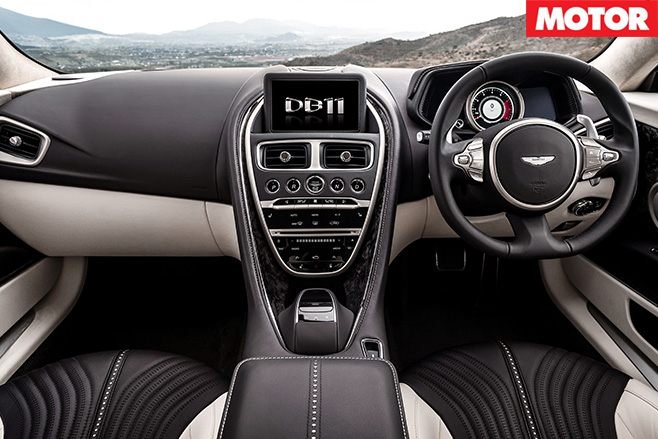
Aston’s archaic normally-aspirated 6.0-litre unit has finally been dethroned by a smaller displacement, twin-turbo 5.2-litre powerplant that can slam up to 447kW and 700Nm in the direction of the beefed-up eight-speed automatic. This mighty engine, built in Cologne, sings a different aria for each driving program. In GT, it’s a rumbling baritone; in Sport it compresses three octaves into a dark-voiced bass; and in Sport Plus it bellows like a baritone at top of his range. Too loud for comfort? Stab the quiet button and the DB11 slips into gear near-noiselessly, like a well behaved hybrid.
But noiseless is definitely the wrong byword for today’s test. We’re at Bridgestone’s European Proving Ground in Aprilia, Italy, and today’s opera is that favourite road test classic: how to destroy a set of tyres in 24 laps. The victims – appropriately codenamed S007, James – come in two different sizes: 255/40R20 up front and 295/35ZR20 at the rear and, assisted by a torque-vectoring limited-slip differential, the Italo-Japanese rubber is sticky enough to fast-forward the 1770kg coupé from 0-100km/h in a sensational 3.9 seconds.
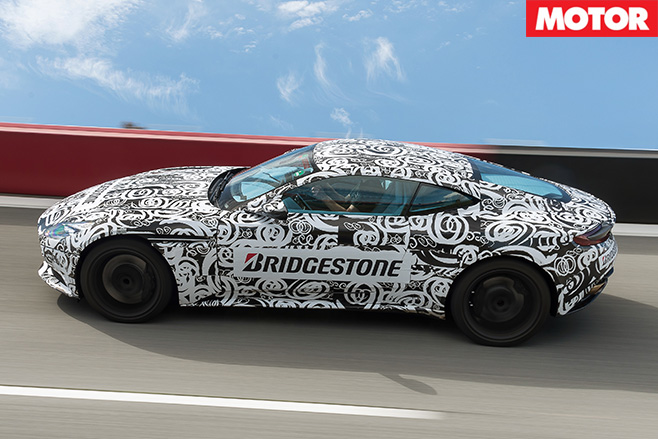
While ‘hands-off’ automatic mode is useful in stop-go traffic, even the most phlegmatic motorist will be tempted to reach for the shift paddles when tackling a twisting road, athough shift timing is crucial because the paddles are partly concealed by the cumbersome wheel. More accessible are three steering wheel- mounted controls that tweak the car’s character.
A button on the left is linked to engine and transmission and scrolls through the three driving modes. The button on the right tunes the steering and adaptive dampers and a small thumbwheel next to it selects the preferred stability control setting. At this point there is no individual mix-and-match option.
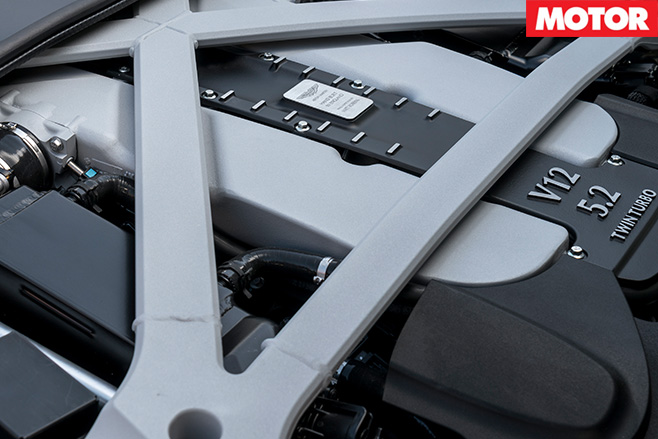
To protect all that beautifully-shaped precious metal, Aston fitted the DB11 with no fewer than twelve proximity sensors, which must be a new world record. In addition, several cameras – including one with a bird’s eye view – help to avoid contact with parked vehicles and kerbs.
While it is reassuring to know that the new Aston Martin can top 320km/h, the car’s explosive mid-range thrust is more impressive in real life. In Sport Plus, the lightning fast throttle response is addictive and physical. As soon as hard longitudinal acceleration meets a significant G-force, the DB11 grabs your emotional equilibrium and pulls it through bends with a determined hand on your collar.
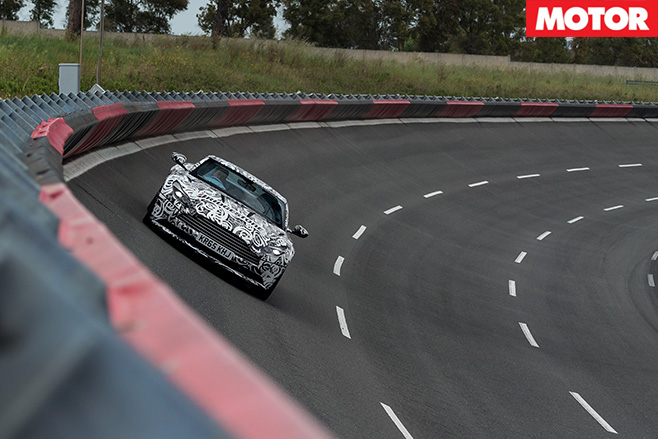
In readiness for future assistance systems, including autonomous driving, Aston abandoned its world-class hydraulic steering in favour of an electrically-assisted system which has a commendably tight turning circle.
On the circuit, the variable rate rack-and-pinion device feels reassuringly accurate with 2.4 turns from lock-to-lock, but on the man-machine interaction scale the DB11 scores only an eight compared to the Rapide’s solid 10. That said, our eye-straining mule was clearly in need of more electronic integration work, which should include a clearer differentiation between the three pre-programed steering calibrations.
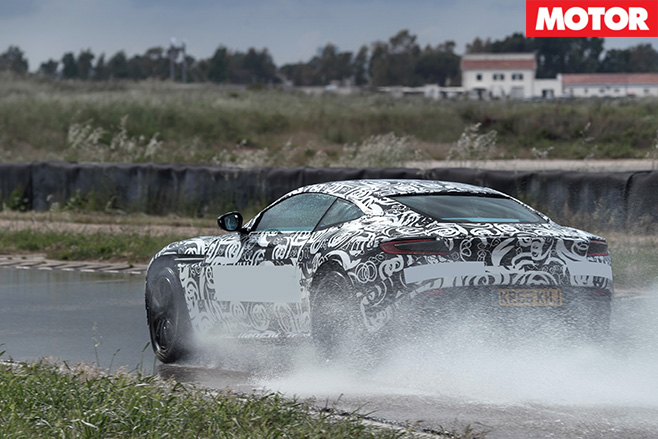
Predictably, there is more electronic wizardry going on under the skin of this beautiful Marek Reichman-designed machine. ‘AeroBlade’ venting with an almost vertical spoiler that pops up reduces high-speed lift; engine start-stop alternatively idles cylinder banks if the driver feels like improving his ‘green’ credentials, another chip controls emergency brake assist (not be confused with automatic cruise control), and active torque vectoring operates across the three driving modes.
Even in Sport Plus, adjustments are so subtle that you only notice the result, never the intervention. The only obvious power-operated downside is the fiddly transmission tunnel-mounted seat controls that are hard to reach.
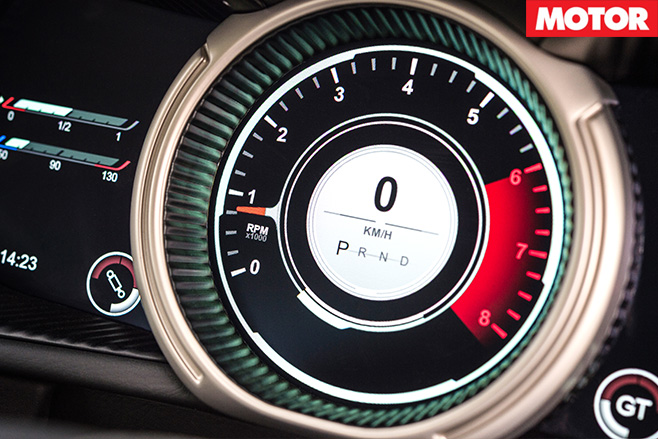
Despite its ability to challenge the fastest kids on the supercar block, Aston’s latest is more about confidence and compliance. The DB11 is not a car that will be rolled out of multi-car garages in leafy suburbs to chase lap records, or waste time winning traffic light grands prix against almost any poseur who pulls up next to it.
You’ll need around $380,000 and a pile of extra cash to tick all the boxes on the options list, but what you will get in return is a car that doesn’t imperiously impose the driving rhythm it deems best for the driver, but will graciously adjust to the pace of the person at the wheel. Whether that is crawling along the Cote d’Azure or storming continents and using the shift paddles or not.
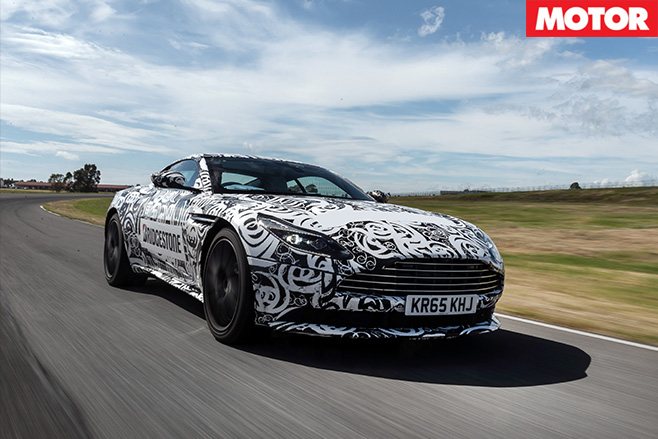
4 OUT OF 5 STARS
SPECS Body: 2-door, 2+2-seat coupe Drive: rear-wheel Engine: 5204cc V12, DOHC, 48v, twin-turbo Bore/stroke: N/A Compression: 9.3:1 Power: 447kW @ 6500rpm Torque: 700Nm @ 1500-5000rpm Power/weight: 252kW/tonne Transmission: 8-speed automatic Weight: 1770kg Suspension(f): double A-arms, adaptive dampers, coil springs, anti-roll bar Suspension(r): multi-links, adaptive dampers, coil springs, anti-roll bar L/W/H: 4739/1940/1279mm Wheelbase: 2805mm Tracks: 1657mm/1624mm (f/r) Steering: electrically-assisted rack-and-pinion Brakes(F): 400mm ventilated discs, 6-piston calipers Brakes(R): 360mm solid discs, 4-piston calipers Wheels: 20 x 9.0-inch (f), 20 x 11-inch (r) Tyre sizes: 255/40 ZR20(f), 295/35 ZR20 (r) Tyre: Bridgestone S007 Price as tested: $380,000 (est) PROS Stonking new V12; more spacious interior; upgraded electronics CONS Slight loss of steering feel; awkward shift paddles



